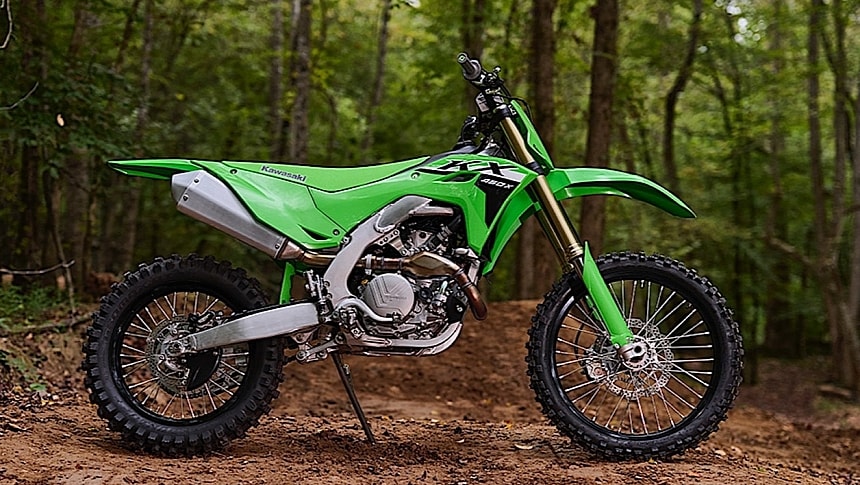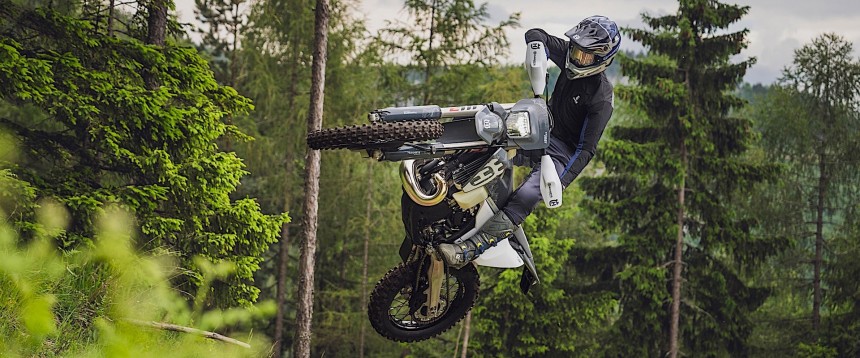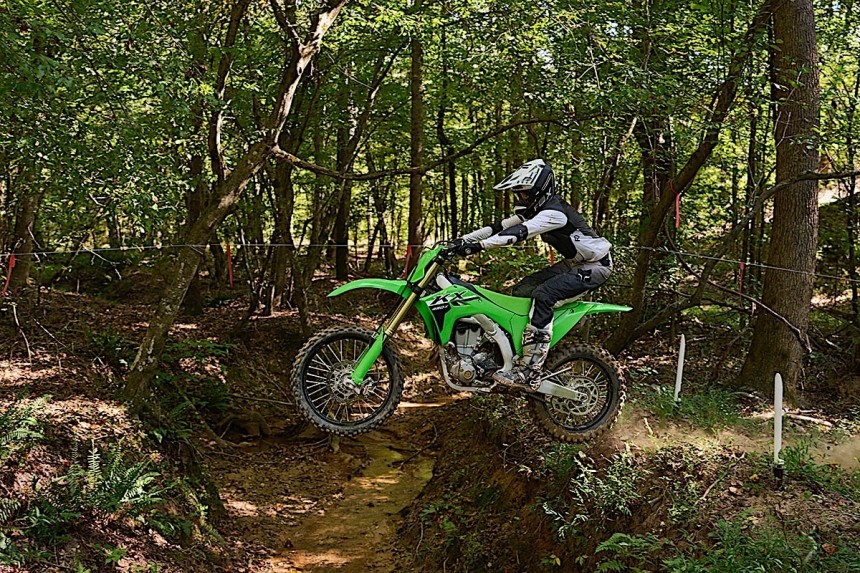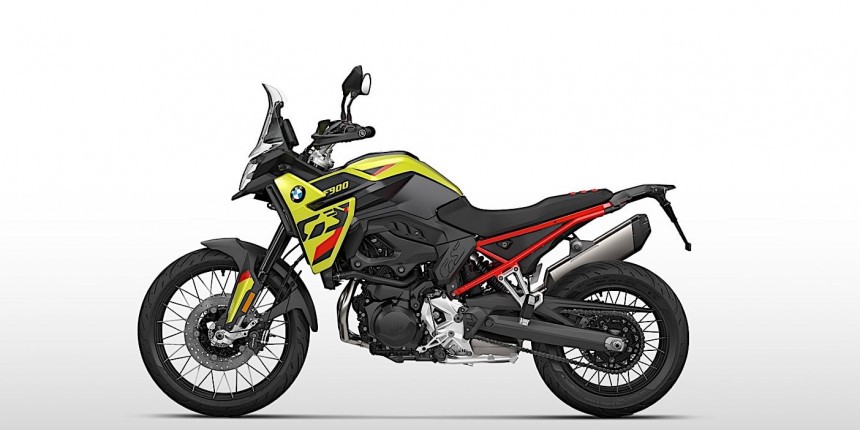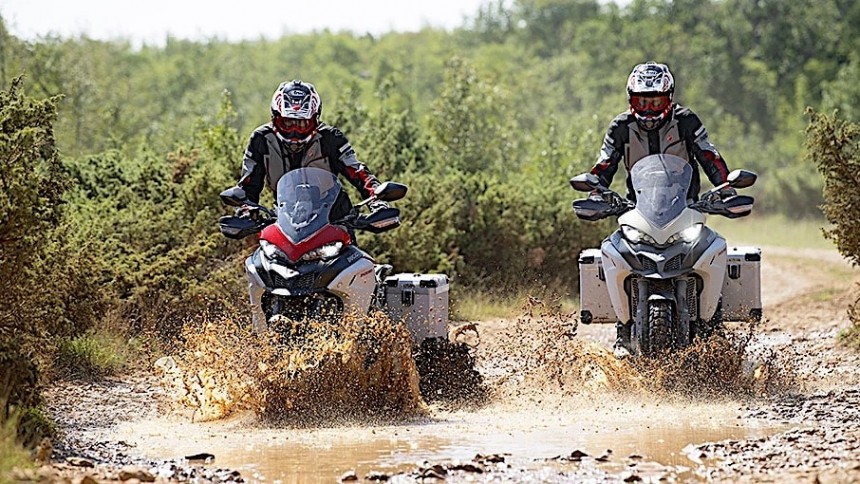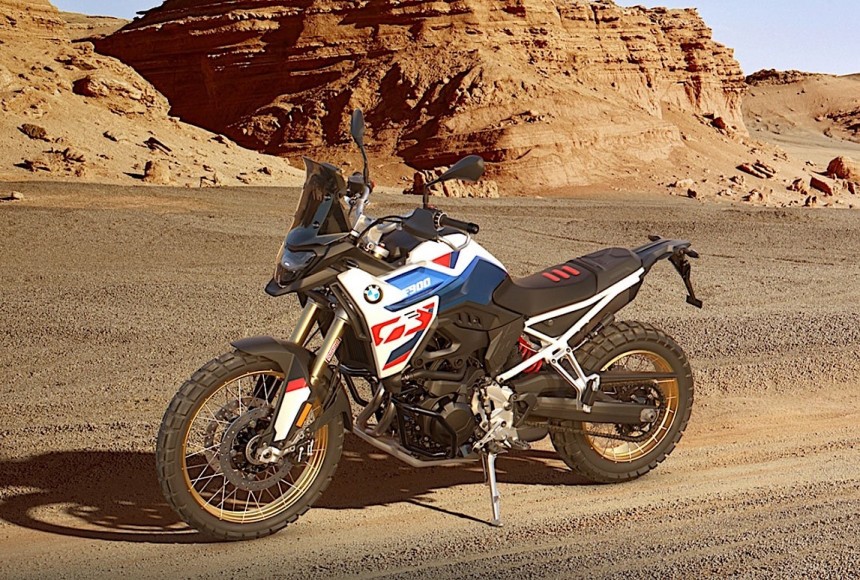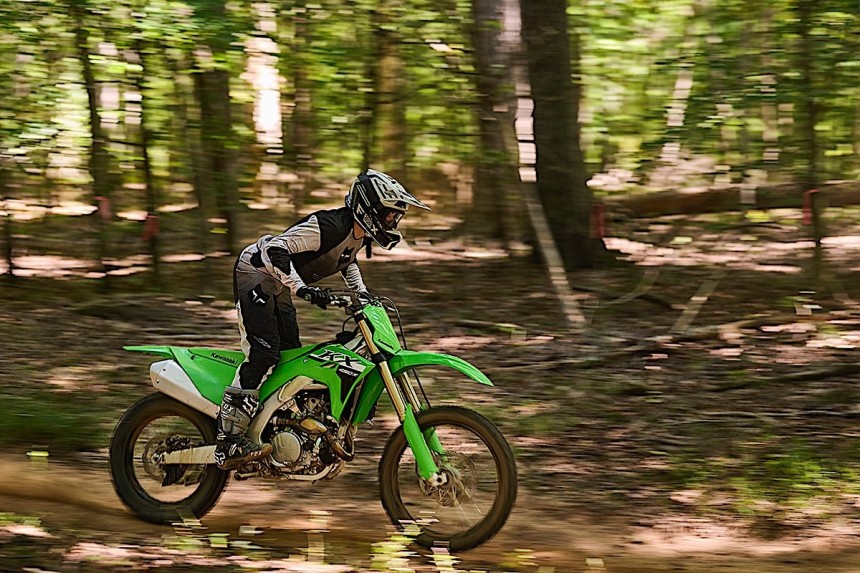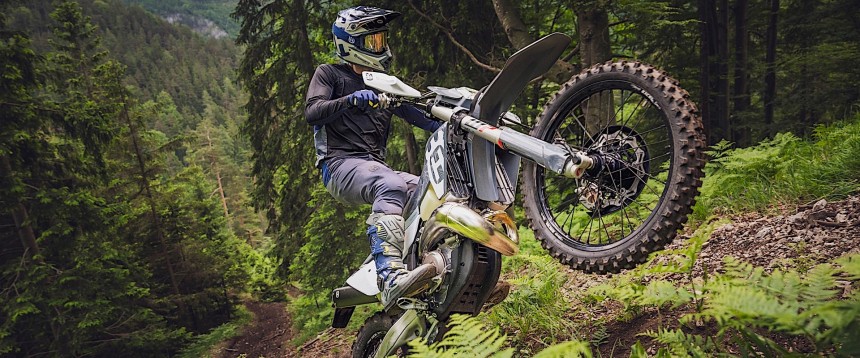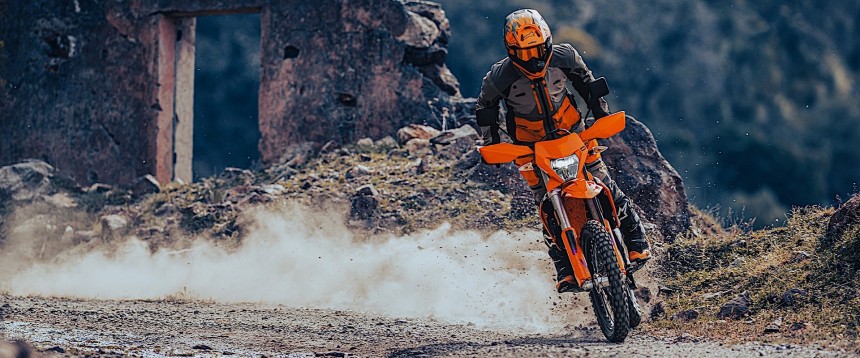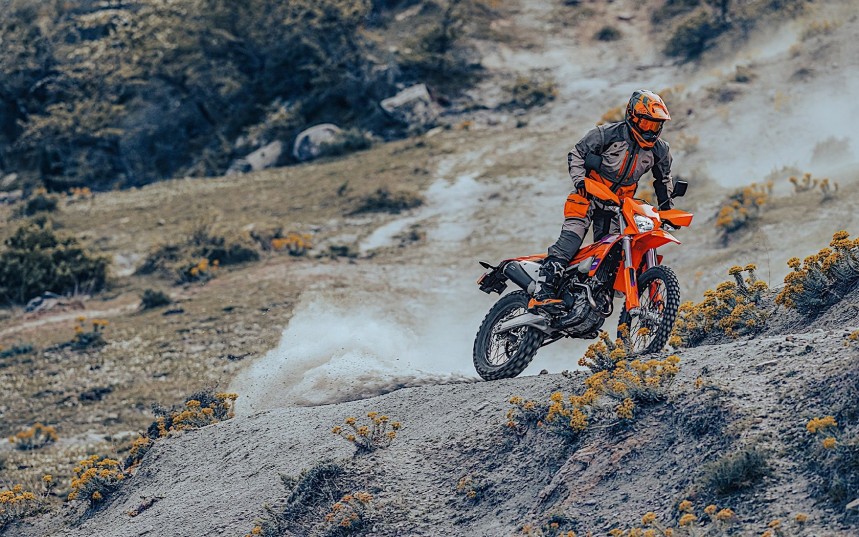The motorcycle was born in the late 1800s as a result of some people over in Germany named Gottlieb Daimler and Wilhelm Maybach creating something that we now know as the Reitwagen. Technically there were others before it, made to run on steam, but the two-wheeled machine created by the fathers of one of the world's premiere car brands was the first to feature an internal combustion engine.
Since the arrival of the Reitwagen the motorcycle kin has grown greatly, and in this day and age there are so many kinds and makes almost every single taste of modern-day riders is satisfied. From race bikes to choppers and from tourers to scooters, motorcycles have taken over a great part of our world.
Few of these two-wheelers are, however, as impressive as enduro motorcycles. Bred for one thing and one thing only – ride on extreme off-road paths – enduros are in many respects the bad boys of their kind.
Before getting to the heart of the problem and understanding what this kind of motorcycle is, it's important to note that enduro was first a sport before being a motorcycle. Or, more to the point, a long-distance race over rough terrain meant to test the endurance of both rider and machine – hence the name.
As you all know, as soon as motorcycles came along people started racing them. At first (in the first decade of the 1900s) they did so on open road courses (which were nothing more than dirt tracks), then moved to actual dirt tracks, and finally evolved to do their thing on asphalt circuits.
Motorcycle racing evolved not only upwards but also sideways, and some of the world's riders decided nice, level tracks were not for them. So they opted to enjoy themselves on hardcore, at first impromptu and later dedicated courses, established over very uneven terrain. Why, they even decided to include obstacles and challenges to make things a lot more interesting.
History notes that the first-ever off-road event for motorcycles (and the oldest one sanctioned by the Fédération Internationale de Motocyclisme - FIM) is the International Six Days Trial (ISDT). Now known as the International Six Days Enduro (ISDE), it first took place in 1913 in England.
Technically speaking the races were held back then on the roads of the country, and not in the wild, but given the state of affairs when it comes to the logistics of the time, they weren't much different from off-road courses.
Even so, it immediately became apparent that most of the motorcycles in existence back then were not really up to the task of taking all the beating. After all, they had to endure no less than six days of manhandling over a course that spread over 777 miles (1,250 km) with minimum repairs.
So something needed to be done to make the machines sturdier and more capable of performing their tasks.
There is no consensus on exactly when the enduro motorcycle was born, or who was the first to make one. Even before they appeared, our world had various kinds of two-wheeled machines capable of taking the beating, in the form of trial and motocross (MX) platforms.
Enduro bikes, thus, are a more hardcore evolution of motocross platforms, which they still closely resemble. It's a distinction that did not happen all of a sudden but evolved over time.
So, enduro motorcycles are rides specifically built to handle harsh terrain, obstacle courses, and aggressive riding. For them to be able to do that, emphasis is placed on capabilities, and not looks: they're mostly a pair of wheels supporting the frame and engine, the handlebar, the fuel tank, and fenders to protect the rider from mud and dirt.
Generally speaking, these bikes are now being offered with large fuel tanks, to allow them to cover the great distances of enduro races, capable but rather small in displacement engines, to provide power while keeping the weight down, and killer suspension systems, because the rough trail ahead would be impossible to navigate without them.
All of the above is pretty much what other kinds of motorcycles offer too, making this entire enduro thing a bit confusing. So what's the difference between an enduro and other types of off-road bikes?
Let's take the MX from which the enduros are derived, for instance. The two kinds of bikes generally share the same kinds of engines, frames, and general construction. But enduros rely on all-terrain tires instead of dirt ones; they are heavier than their siblings because they don't have to perform stunts like the MX, but also because of the larger fuel tank and less stiff suspension systems than on motocross.
On some level, an enduro motorcycle can be seen as a cross between a dual-sport and a dirt bike – in fact, Americans marketed dual-sport bikes as enduros in the 1970s. It shares components and attributes with both of them, but unlike a dirt bike, it comes with a headlight, and unlike a dual-sport, it is lighter.
The main difference, however, between enduros and dirt, MX, dual sport, and, at times adventure bikes is that while all the rest are road-legal almost most of the time, enduros can ride on public roads only after special modifications have been made – that means the fitting of headlights, mufflers, and other legally required gear.
When it comes to the powerplants they use, these motorcycles generally go for either two-stroke or four-stroke powerplants, with displacements ranging from 125cc to 650cc. The engines' power levels and performance are not exactly at the top of the food chain, but that is only because enduro riding is not as much about the bike's speed but about the rider's skill.
Because of the niche segment this kind of two-wheeler targets, not all bike makers in this world are in the business of making enduro motorcycles. But there are a few that have taken the production of these things to the rank of art, and offer purpose-built enduros, enduros that can be ridden on the road, enduros for beginners and the more experienced, you name it.
Below you'll find a short list of the most important enduro motorcycles of our time, the ones that are listed as such by their makers.
Despite its image of making motorcycles that are very good at racing on asphalt tracks, Italian company Ducati has a very wide range of bikes it likes to call Big Duals. That would be the Multistrada family, a breed that's been around for more than two decades now.
The present-day Multistrada range includes no less than eight models, ranging from the V2 and ending with the new V4 RS. Although no longer listed in the lineup, because it was officially discontinued, one can also find, hidden on Ducati's configurator, the Multistrada 1260 Enduro.
The bike is described as the wild side of Ducati, and it's so capable that back in 2020 it won the 2020 Transanatolia Rally in the Big Dual category. It's also an enduro... with bags.
The bike relies on a Testastretta DVT 1262 engine to move along over treacherous terrain. The unit develops 158 horsepower and 128 Nm of torque, while weighing just 225 kg (496 pounds). A fully adjustable suspension system called Ducati Skyhook Suspension Evo (DSS) helps it take the beating.
Because it is technically no longer in production, the configurator for this motorcycle is not up and running. There is, however, a chance you could still find one on the dealer's lot, considering how Ducati pulled the plug on it just a few years back.
Technically part of a dual-sport range of motorcycles, the BMW F 900 GS is simply described by BMW as "your Enduro," a bike capable of traveling with equal ease over gravel and stones, or even through wind and water.
The bike is part of a family that's been in the BMW offering ever since the 1980s, and it was at the center of a major refresh the German bike maker announced earlier in January 2024, which also applies to the F 800 GS and F 900 GS Adventure.
Using a trellis steel frame, the motorcycle comes with an engine that is slightly larger than what enduros generally use, namely an 895cc parallel twin. Its performance numbers read 105 hp and 68.6 lb-ft of torque, slightly higher than what the model offered in its previous incarnation.
BMW is selling the BMW F 900 GS for prices that start at $13,495, and even throws in, as an option, a purpose-made enduro package. It includes things like black handlebars, aluminum risers, sports suspension, and a more capable chain.
Kawasaki is a bike maker best known for making the mighty Ninja family of motorcycles, but its sheer size means it couldn't have simply ignored the enduro segment. So it did what it was expected from it, and entered the game with a lineup that presently counts no less than seven enduro models.
We chose to talk about the KX450X because it is the newest addition to the range for the 2024 model year. Sporting a liquid-cooled, four-stroke 449cc single-cylinder engine in a redesigned aluminum frame, the bike also uses an inverted fork up front and a Uni-Trak system at the rear.
Most importantly, the KX450X is the first of the KX family to offer Power Mode selection and Kawasaki Traction control with the push of a button.
The bike is one of the most affordable offerings on the market, selling in the U.S. for prices that start at $10,699. To make sure no one mistakes it for something else, the KX450X is offered in a single, very in-your-face color: Lime Green.
If we are to be truly honest about it, the modern world has just two major makers of enduro motorcycles, and they are both Austrian. Because of this, and on account of the fact their enduro motorcycle offering is quite extensive, they occupy the top two positions on our list.
The first of the two companies we'll be discussing is Husqvarna, a company that's been around for more than 120 years now, and it's presently offering no less than 12 motorcycle models of this kind, spread in three main categories: two-stroke, four-stroke, and Cross Country.
For our list of enduro motorcycle recommendations, we chose the FX 450, a four-stroke machine that “headlines" the company's off-road lineup.
Packing a 450cc engine, the FX delivers just 53 hp and 44 Nm of torque, but that is clearly more than enough for the bike to conquer the most demanding of terrains. Helping with that are, naturally, the chromium molybdenum steel frame, and the WP XACT front and rear suspension system.
At around just $11,000, the Husqvarna FX 450 comes across as one very affordable bike that can be treated badly off the beaten path.
The second of the two companies that have made a name for themselves in the enduro world is KTM. And by name I mean a really big one, as this crew of Austrians is a true powerhouse in this field: in about 30 years spent in various enduro competitions, KTM won no less than 126 world titles.
So, a name that is synonymous with enduro, and that's why the company's dedicated range of motorcycles includes at the moment six four-stroke bikes and four two-stroke ones.
The general of this small army is, without a doubt, the 500 EXC-F. Powered by a slightly larger engine than what we usually get (511cc), the bike can easily fill in the shoes of a dual-sport that for the new model year is 95 percent new.
With an apparently low-cost transparent fuel tank sitting high on the frame, the bike moves over harsh terrain on alloy wheels and an innovative tool-free suspension system comprising a shock absorber at the rear and an all-new fork at the front.
The engine runs a new offroad control unit with an LED indicators unit that replaces the previous fuses and relays, making it really easy to identify a potential electrical problem and taking replacement fuses out of the equation.
The KTM 500 EXC-F is selling in its newest configuration for about $12,000, which is not all that much for a ride with the pedigree of champions.
The above bike makers have been or are in the business of making enduro motorcycles and calling them as such. But there are others, too, doing similar things, even if for the most part they steer clear of actually calling their bikes enduros and mostly go for the related monikers.
Honda, for instance, sells adventure and dual-sport motorcycles but also trail and motocross machines. Another Japanese company, Suzuki, is making money off adventure, dual sport, and motocross, while Yamaha is playing the cross-country game. Last but not least, the Brits from Triumph have a motocross bike in their portfolio.
All of the above are the big names of the industry, but there are other, smaller companies that offer their own enduro motorcycles. Names like Beta (Italy), with a portfolio of 15 enduro rides, Gas Gas (Spain), with six of them, or Sherco (France), with nine bikes in the offering, are quickly catching up.
We'll take a much closer look at these impressive bikes, largely unknown to the general public, in a separate story in the coming weeks.
Few of these two-wheelers are, however, as impressive as enduro motorcycles. Bred for one thing and one thing only – ride on extreme off-road paths – enduros are in many respects the bad boys of their kind.
Before getting to the heart of the problem and understanding what this kind of motorcycle is, it's important to note that enduro was first a sport before being a motorcycle. Or, more to the point, a long-distance race over rough terrain meant to test the endurance of both rider and machine – hence the name.
As you all know, as soon as motorcycles came along people started racing them. At first (in the first decade of the 1900s) they did so on open road courses (which were nothing more than dirt tracks), then moved to actual dirt tracks, and finally evolved to do their thing on asphalt circuits.
Motorcycle racing evolved not only upwards but also sideways, and some of the world's riders decided nice, level tracks were not for them. So they opted to enjoy themselves on hardcore, at first impromptu and later dedicated courses, established over very uneven terrain. Why, they even decided to include obstacles and challenges to make things a lot more interesting.
History notes that the first-ever off-road event for motorcycles (and the oldest one sanctioned by the Fédération Internationale de Motocyclisme - FIM) is the International Six Days Trial (ISDT). Now known as the International Six Days Enduro (ISDE), it first took place in 1913 in England.
Even so, it immediately became apparent that most of the motorcycles in existence back then were not really up to the task of taking all the beating. After all, they had to endure no less than six days of manhandling over a course that spread over 777 miles (1,250 km) with minimum repairs.
So something needed to be done to make the machines sturdier and more capable of performing their tasks.
There is no consensus on exactly when the enduro motorcycle was born, or who was the first to make one. Even before they appeared, our world had various kinds of two-wheeled machines capable of taking the beating, in the form of trial and motocross (MX) platforms.
Enduro bikes, thus, are a more hardcore evolution of motocross platforms, which they still closely resemble. It's a distinction that did not happen all of a sudden but evolved over time.
What makes an enduro motorcycle
Generally speaking, these bikes are now being offered with large fuel tanks, to allow them to cover the great distances of enduro races, capable but rather small in displacement engines, to provide power while keeping the weight down, and killer suspension systems, because the rough trail ahead would be impossible to navigate without them.
All of the above is pretty much what other kinds of motorcycles offer too, making this entire enduro thing a bit confusing. So what's the difference between an enduro and other types of off-road bikes?
Let's take the MX from which the enduros are derived, for instance. The two kinds of bikes generally share the same kinds of engines, frames, and general construction. But enduros rely on all-terrain tires instead of dirt ones; they are heavier than their siblings because they don't have to perform stunts like the MX, but also because of the larger fuel tank and less stiff suspension systems than on motocross.
On some level, an enduro motorcycle can be seen as a cross between a dual-sport and a dirt bike – in fact, Americans marketed dual-sport bikes as enduros in the 1970s. It shares components and attributes with both of them, but unlike a dirt bike, it comes with a headlight, and unlike a dual-sport, it is lighter.
When it comes to the powerplants they use, these motorcycles generally go for either two-stroke or four-stroke powerplants, with displacements ranging from 125cc to 650cc. The engines' power levels and performance are not exactly at the top of the food chain, but that is only because enduro riding is not as much about the bike's speed but about the rider's skill.
Because of the niche segment this kind of two-wheeler targets, not all bike makers in this world are in the business of making enduro motorcycles. But there are a few that have taken the production of these things to the rank of art, and offer purpose-built enduros, enduros that can be ridden on the road, enduros for beginners and the more experienced, you name it.
Below you'll find a short list of the most important enduro motorcycles of our time, the ones that are listed as such by their makers.
Ducati Multistrada 1260 Enduro
The present-day Multistrada range includes no less than eight models, ranging from the V2 and ending with the new V4 RS. Although no longer listed in the lineup, because it was officially discontinued, one can also find, hidden on Ducati's configurator, the Multistrada 1260 Enduro.
The bike is described as the wild side of Ducati, and it's so capable that back in 2020 it won the 2020 Transanatolia Rally in the Big Dual category. It's also an enduro... with bags.
The bike relies on a Testastretta DVT 1262 engine to move along over treacherous terrain. The unit develops 158 horsepower and 128 Nm of torque, while weighing just 225 kg (496 pounds). A fully adjustable suspension system called Ducati Skyhook Suspension Evo (DSS) helps it take the beating.
Because it is technically no longer in production, the configurator for this motorcycle is not up and running. There is, however, a chance you could still find one on the dealer's lot, considering how Ducati pulled the plug on it just a few years back.
BMW F 900 GS
The bike is part of a family that's been in the BMW offering ever since the 1980s, and it was at the center of a major refresh the German bike maker announced earlier in January 2024, which also applies to the F 800 GS and F 900 GS Adventure.
Using a trellis steel frame, the motorcycle comes with an engine that is slightly larger than what enduros generally use, namely an 895cc parallel twin. Its performance numbers read 105 hp and 68.6 lb-ft of torque, slightly higher than what the model offered in its previous incarnation.
BMW is selling the BMW F 900 GS for prices that start at $13,495, and even throws in, as an option, a purpose-made enduro package. It includes things like black handlebars, aluminum risers, sports suspension, and a more capable chain.
Kawasaki KX450X
We chose to talk about the KX450X because it is the newest addition to the range for the 2024 model year. Sporting a liquid-cooled, four-stroke 449cc single-cylinder engine in a redesigned aluminum frame, the bike also uses an inverted fork up front and a Uni-Trak system at the rear.
Most importantly, the KX450X is the first of the KX family to offer Power Mode selection and Kawasaki Traction control with the push of a button.
The bike is one of the most affordable offerings on the market, selling in the U.S. for prices that start at $10,699. To make sure no one mistakes it for something else, the KX450X is offered in a single, very in-your-face color: Lime Green.
Husqvarna FX 450
The first of the two companies we'll be discussing is Husqvarna, a company that's been around for more than 120 years now, and it's presently offering no less than 12 motorcycle models of this kind, spread in three main categories: two-stroke, four-stroke, and Cross Country.
For our list of enduro motorcycle recommendations, we chose the FX 450, a four-stroke machine that “headlines" the company's off-road lineup.
Packing a 450cc engine, the FX delivers just 53 hp and 44 Nm of torque, but that is clearly more than enough for the bike to conquer the most demanding of terrains. Helping with that are, naturally, the chromium molybdenum steel frame, and the WP XACT front and rear suspension system.
At around just $11,000, the Husqvarna FX 450 comes across as one very affordable bike that can be treated badly off the beaten path.
KTM 500 EXC-F
So, a name that is synonymous with enduro, and that's why the company's dedicated range of motorcycles includes at the moment six four-stroke bikes and four two-stroke ones.
The general of this small army is, without a doubt, the 500 EXC-F. Powered by a slightly larger engine than what we usually get (511cc), the bike can easily fill in the shoes of a dual-sport that for the new model year is 95 percent new.
With an apparently low-cost transparent fuel tank sitting high on the frame, the bike moves over harsh terrain on alloy wheels and an innovative tool-free suspension system comprising a shock absorber at the rear and an all-new fork at the front.
The engine runs a new offroad control unit with an LED indicators unit that replaces the previous fuses and relays, making it really easy to identify a potential electrical problem and taking replacement fuses out of the equation.
The KTM 500 EXC-F is selling in its newest configuration for about $12,000, which is not all that much for a ride with the pedigree of champions.
Honda, for instance, sells adventure and dual-sport motorcycles but also trail and motocross machines. Another Japanese company, Suzuki, is making money off adventure, dual sport, and motocross, while Yamaha is playing the cross-country game. Last but not least, the Brits from Triumph have a motocross bike in their portfolio.
All of the above are the big names of the industry, but there are other, smaller companies that offer their own enduro motorcycles. Names like Beta (Italy), with a portfolio of 15 enduro rides, Gas Gas (Spain), with six of them, or Sherco (France), with nine bikes in the offering, are quickly catching up.
We'll take a much closer look at these impressive bikes, largely unknown to the general public, in a separate story in the coming weeks.
